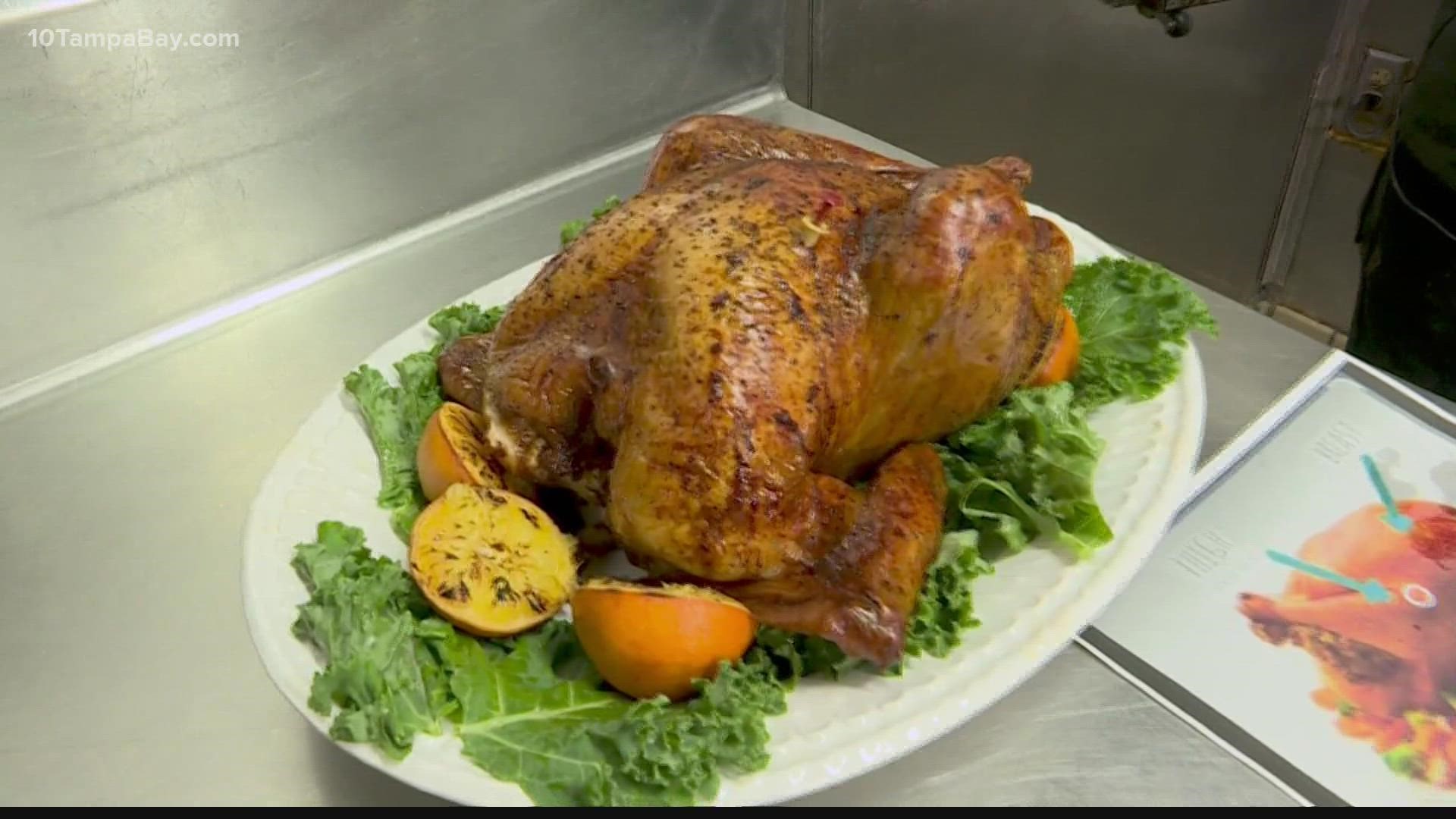ST. PETERSBURG, Fla. — By now, hopefully, everyone has taken their turkey out of the freezer in preparation for the big day tomorrow!
With Thanksgiving being a time for family and friends to come together and enjoy a meal, 10 Tampa Bay invited two chefs to answer any last-minute turkey day questions people may be asking.
Here's some cooking advice from Jeff Conley, the senior resident chef at Public Aprons Cooking School, and Peter Farrand, the executive chef at Smokey Bones, for anyone and everyone planning on working their magic in the kitchen tomorrow:
What should I do if my turkey is not fully thawed in time?
You have a couple of options. The first is to break the turkey down into four parts — two breasts and two legs. Then put the parts in plastic zipper bags and let them sit in a bowl under cool running water to thaw. Then roast them. This will also allow you to control the cooking times on the breasts vs the legs and you will have a more perfectly cooked turkey. The other option is to cook slow and low at 300 degrees, for longer.
"If it were me, I’d break the turkey down and take that option," Conley said. "Please be careful cutting the not fully thawed turkey. It will be harder to cut."
Do I need to start seasoning the bird from the early morning?
The earlier the better and overnight also is an option. Remember the amount of surface area of the turkey that will be seasoned vs the amount of internal meat that won’t be seasoned is huge. Don’t be afraid to season heavily and ahead of time.
"I think the average home cook would be surprised at the amount of salt and seasonings that get used in a professional setting," Farrand explained.
Do I mix thyme, basil, sage, black pepper and kosher salt with the basting oil then baste or baste with oil and sprinkle herbs all over the bird? Or does it even matter?
It helps to make the mixture ahead of time/together in order for it to be distributed more evenly. Having the mixture made with the oil also allows you to get it into all areas of the turkey.
Is it safe to cook stuffing inside the turkey?
Any proteins that you like to add to your stuffing, such as sausage or oysters, need to be cooked before the stuffing goes in the bird. Between the size of the cavity and the density of the stuffing itself, those items may not cook all the way to the proper temperature.
"I know that we all like the look of the stuffed turkey, but you will get a great, and tasty result cooking the stuffing on its own," Conley says.
Do I need to clean a turkey?
[It's] recommended to not rinse the turkey underwater. Just simply pat the turkey dry inside and out to remove any moisture and to help the basting oil and seasonings adhere to the turkey. Removing the excess moisture from the turkey also helps it roast and brown better.
Is a roasting rack absolutely necessary for your turkey?
It is important to have something to allow the hot air in the oven to pass under the turkey for an even cook. If you don’t have a roasting rack, don’t worry, there is a great and tasty substitute. Cut up some carrots, onions and celery. Make the pieces pretty big and put them on the bottom of your roasting pan. Put some foil down first. Then, place the turkey on the veggies and let them be your “roasting rack." This will not only do the job of giving room for the air to pass but will also impart some flavor. You can also take some of the roasted veg, and the drippings from the turkey and blend them up in your gravy.
Hopefully, these answers from the chefs help anyone in need this Thanksgiving!

